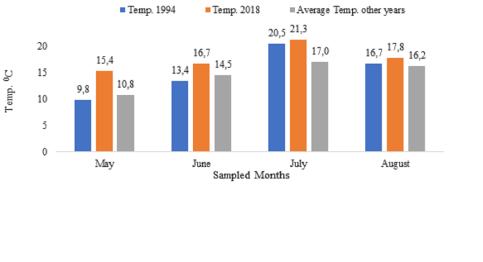discussion & conclusion.

It can be said for this study that, the species composition has changed between 1994 and 2018, with more species recorded in 2018 compared to 1994. It seems as if higher temperature could have resulted in higher activity of beetles which homogenize the composition in 2018 (Fig. 6). As a result, canopy cover and trunk circumference could no longer explain species numbers in 2018. Depending on the management objective, saproxylic beetles are particularly useful as indicators because of their sensitivity to habitat changes and can be used to weigh the abundance and presence of resources that show the general ecosystem productivity. Taking the example of the occurrence of E. ferrugineus as an indicator for species richness. New records of Elater ferrugineus in 2018 compared to the none in 1994, can perhaps be looked at as a good indication that the current management interventions were favouring an increasing number of species, as the species itself is considered to be most susceptible among saproxylic beetles to habitat fragmentation, however it is hard to make strong conclusions for this study due to warmer conditions experienced.
Considering there was no observed difference in species composition between the living and dead trees, this means that dead oaks contribute in a landscape level to the species living on living old hollow trees. It is therefore important for conservationists to ensure that dead trees are included in the same area when planning for the conservation of saproxylic beetles as it contributes to species richness in the living trees.
Responsible for this page:
Director of undergraduate studies Biology
Last updated:
09/01/19
